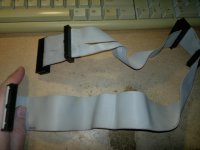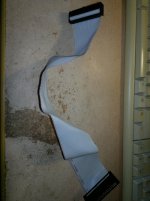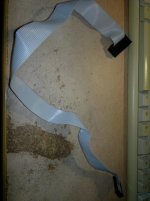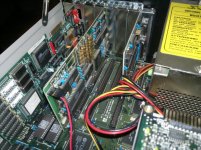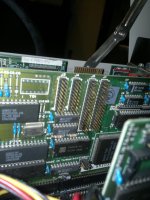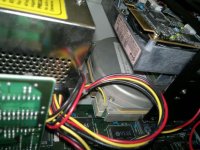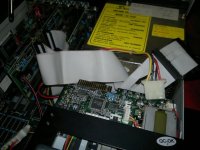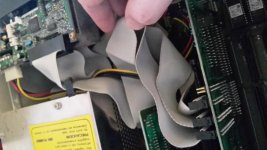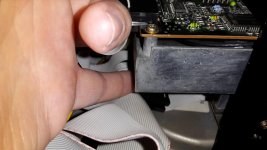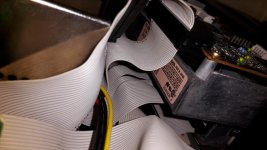Hello 
I own an old 286 PC made by DTK, it's called 'Mini 286'. It's equipped with 1mb ram and it's made in 1989. It was laying in my closet for 6 years now. I've remembered it might be a good time to change the CMOS battery. I was too late, it has already leaked. I disasambled the whole PC, resoldered a new battery, cleaned out the corrosion and it works just fine. I gave it a perfect clean. There is not a dust particle left. I disassembled and cleaned everything, including the power supply. I've never cleaned the PC before, so now it was a good time as I had to completely disassemble it to remove the main board from the case.
Eager to get it working again, I plugged in the data cable of the ST-251-1 the other way around (on the controller side, as the disk side is keyed). Now the bios was dead (obviously since I've changed the battery). I did not remember the "hard disk type" off hand. So I googled. I found this drive should be either type 30 or type 44 on my system. It has 820 cylinders and 6 heads. 44 and 30 are the only two types that match up in my bios.
However the drive is still dead. The green led comes on a couple of times at bootup, and the drive spins up, but the system says Physical disk 0 failure. What exactly has failed and can I ever know? It was plugged in the opposite side the first ~6 bootups before I gave up with the bios settings and started looking for a problem elsewhere. That's when I've found the flipped data cable.
The drive certainly did work before (6 years ago). Could I have blown something when I reversed the connector? The drive sounds normal and healthy.
Thanks
I own an old 286 PC made by DTK, it's called 'Mini 286'. It's equipped with 1mb ram and it's made in 1989. It was laying in my closet for 6 years now. I've remembered it might be a good time to change the CMOS battery. I was too late, it has already leaked. I disasambled the whole PC, resoldered a new battery, cleaned out the corrosion and it works just fine. I gave it a perfect clean. There is not a dust particle left. I disassembled and cleaned everything, including the power supply. I've never cleaned the PC before, so now it was a good time as I had to completely disassemble it to remove the main board from the case.
Eager to get it working again, I plugged in the data cable of the ST-251-1 the other way around (on the controller side, as the disk side is keyed). Now the bios was dead (obviously since I've changed the battery). I did not remember the "hard disk type" off hand. So I googled. I found this drive should be either type 30 or type 44 on my system. It has 820 cylinders and 6 heads. 44 and 30 are the only two types that match up in my bios.
However the drive is still dead. The green led comes on a couple of times at bootup, and the drive spins up, but the system says Physical disk 0 failure. What exactly has failed and can I ever know? It was plugged in the opposite side the first ~6 bootups before I gave up with the bios settings and started looking for a problem elsewhere. That's when I've found the flipped data cable.
The drive certainly did work before (6 years ago). Could I have blown something when I reversed the connector? The drive sounds normal and healthy.
Thanks

